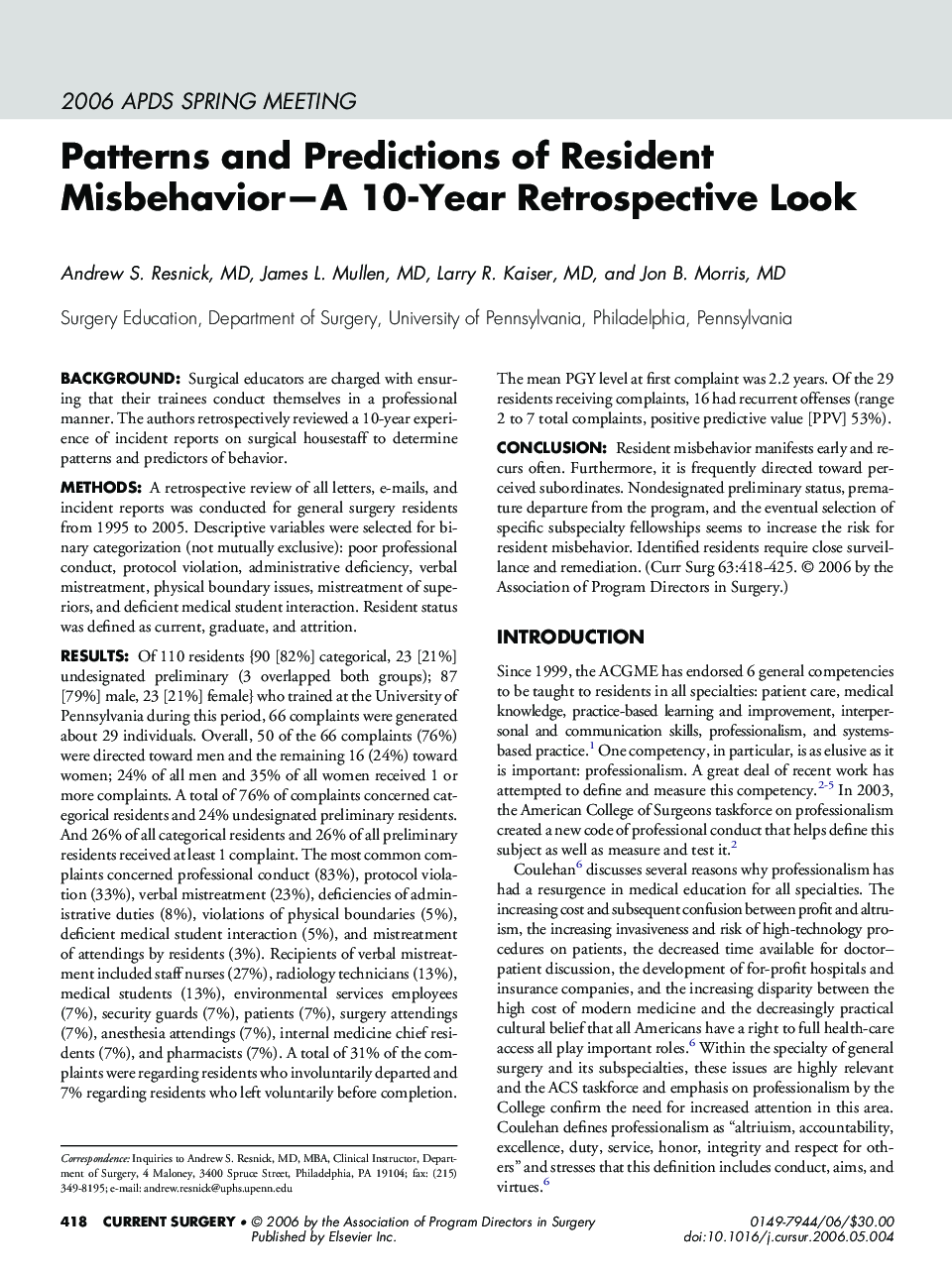| کد مقاله | کد نشریه | سال انتشار | مقاله انگلیسی | نسخه تمام متن |
|---|---|---|---|---|
| 4284322 | 1611851 | 2006 | 8 صفحه PDF | دانلود رایگان |

BackgroundSurgical educators are charged with ensuring that their trainees conduct themselves in a professional manner. The authors retrospectively reviewed a 10-year experience of incident reports on surgical housestaff to determine patterns and predictors of behavior.MethodsA retrospective review of all letters, e-mails, and incident reports was conducted for general surgery residents from 1995 to 2005. Descriptive variables were selected for binary categorization (not mutually exclusive): poor professional conduct, protocol violation, administrative deficiency, verbal mistreatment, physical boundary issues, mistreatment of superiors, and deficient medical student interaction. Resident status was defined as current, graduate, and attrition.ResultsOf 110 residents {90 [82%] categorical, 23 [21%] undesignated preliminary (3 overlapped both groups); 87 [79%] male, 23 [21%] female} who trained at the University of Pennsylvania during this period, 66 complaints were generated about 29 individuals. Overall, 50 of the 66 complaints (76%) were directed toward men and the remaining 16 (24%) toward women; 24% of all men and 35% of all women received 1 or more complaints. A total of 76% of complaints concerned categorical residents and 24% undesignated preliminary residents. And 26% of all categorical residents and 26% of all preliminary residents received at least 1 complaint. The most common complaints concerned professional conduct (83%), protocol violation (33%), verbal mistreatment (23%), deficiencies of administrative duties (8%), violations of physical boundaries (5%), deficient medical student interaction (5%), and mistreatment of attendings by residents (3%). Recipients of verbal mistreatment included staff nurses (27%), radiology technicians (13%), medical students (13%), environmental services employees (7%), security guards (7%), patients (7%), surgery attendings (7%), anesthesia attendings (7%), internal medicine chief residents (7%), and pharmacists (7%). A total of 31% of the complaints were regarding residents who involuntarily departed and 7% regarding residents who left voluntarily before completion. The mean PGY level at first complaint was 2.2 years. Of the 29 residents receiving complaints, 16 had recurrent offenses (range 2 to 7 total complaints, positive predictive value [PPV] 53%).ConclusionResident misbehavior manifests early and recurs often. Furthermore, it is frequently directed toward perceived subordinates. Nondesignated preliminary status, premature departure from the program, and the eventual selection of specific subspecialty fellowships seems to increase the risk for resident misbehavior. Identified residents require close surveillance and remediation.
Journal: Current Surgery - Volume 63, Issue 6, November–December 2006, Pages 418–425